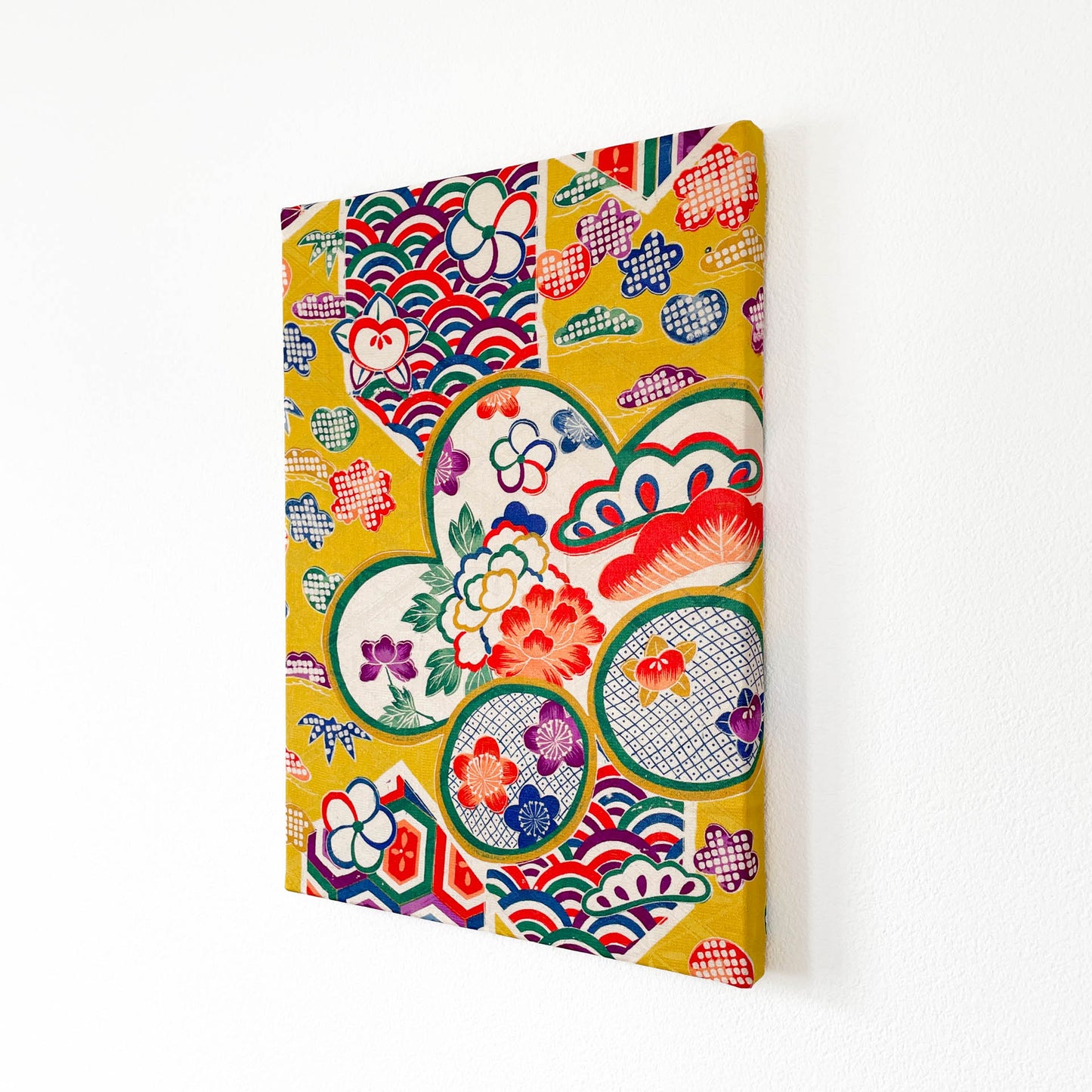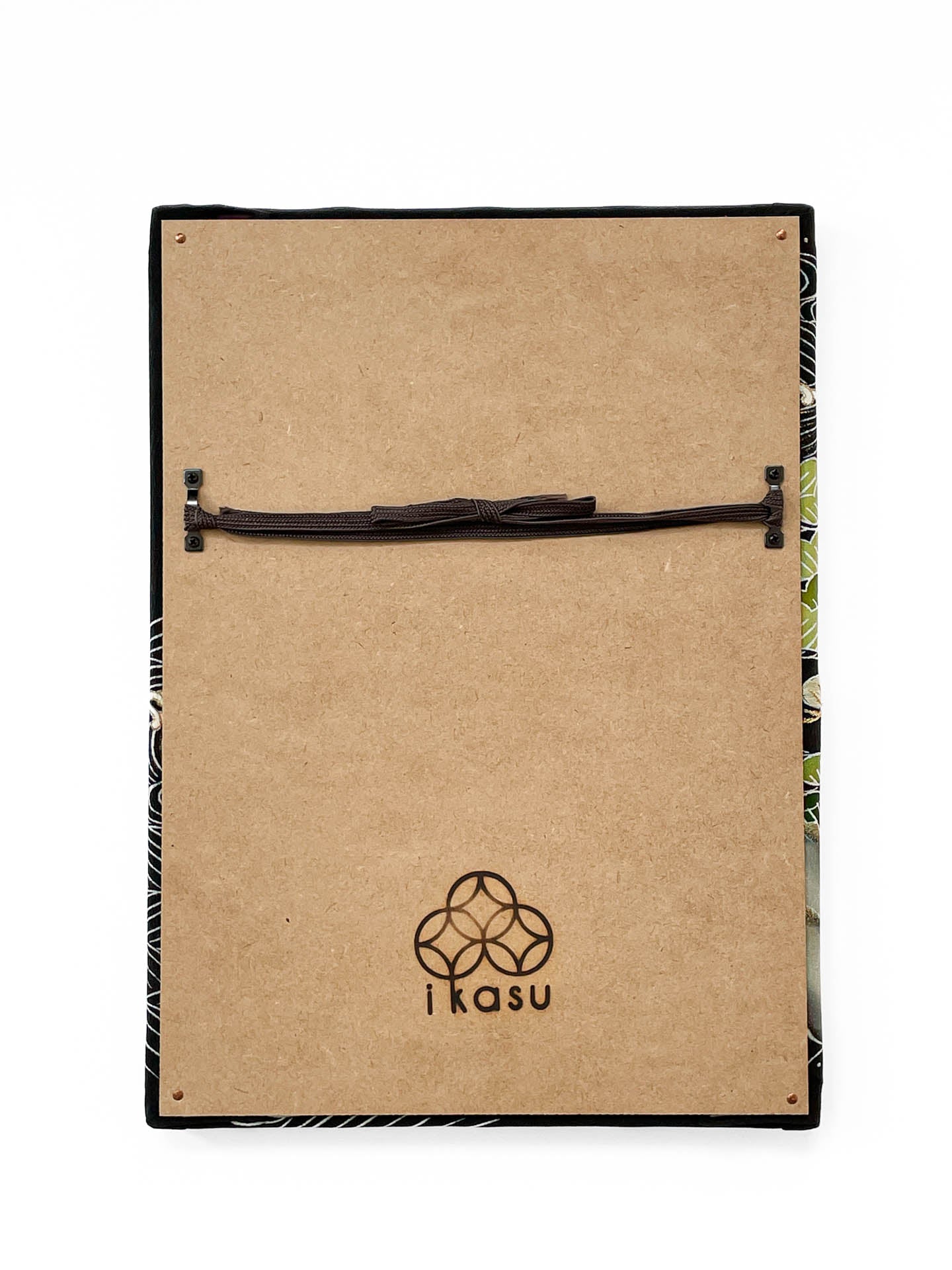ToriDori ~Prosperity~
ToriDori ~Prosperity~
Couldn't load pickup availability
Size
about 24cm x about 34cm x about 2cm
Materials
wooden frame, cotton linen canvas (under-layer), pure silk (outside-layer)
About this canvas
"ToriDori" means "colorful" or "mixed" in Japanese.
Colorful auspicious pattern of this kimono canvas will definitely bring good luck to your home.
Period/Story
The juban (underkimono) used for this canvas was made and used in Taisho period (early 20th century).
Explanation and meaning of pattern and colors
The colorful expression of red, blue, and green on a yellow background, which is rare in Kyo-yuzen, is probably a color scheme imitating Okinawa (south tropical islands of Japan) kimono style called Bingata.
The large plum and turtle shell pattern is filled with auspicious symbols such as pine, bamboo, plum, peony, tachibana (mandarin), seigaiha (blue ocean waves), and kanoko (small spots imitating fawn fur pattern).
The peony pattern is associated with the meanings of "wealth" and "happiness. It is a gorgeous pattern that catches people's attention and has an auspicious meaning. Tachibana is also mentioned in "Kojiki," Japan's oldest book, as an auspicious evergreen plant that grows in an ideal land of immortality and brings longevity and prosperity to descendants. It is one of the few patterns of Japanese origin with a cute heart-shaped fruit and leaves.
The tortoise shell pattern is a geometric pattern of regular hexagons, named for its resemblance to the shape of a turtle's shell. In Japan, it is one of the most popular auspicious patterns since ancient times, as it is associated with the turtle, a symbol of longevity and good omen. In addition, this tortoiseshell pattern is decorated with a cross representing a flower petal in the center. This pattern is thought to be based on the traditional Japanese embroidery technique called "Kikko-hana-sashi" (stitching on a tortoise shell).
The dot-like pattern on the background of the plum blossoms and the pine, bamboo, and plum trees scattered on the ground is a "fawn" pattern. The name comes from its resemblance to the spots on the back of a fawn. The deer is also said to be a "messenger of God" and is used as a symbol of fruitfulness and motherhood, as it is an animal of good luck and is known for its' excellent vitality and fertility.
Description of fabric characteristics
This is a children's juban (under-kimono) dyed in kata-yuzen (traditional Japanese print technique). The multi-colored print-dyeing with patterns drawn within the patterns shows a high level of skill.
Decoration Advice
The canvas can be displayed on a table, wall, etc. You will need tacks or nails to hang it on the wall. Because it is light, you can hang it with two ordinary thumbtacks. You can also lean it against an easel. Perfect for redecorating your room, as a housewarming gift, as a present, or as a souvenir for your loved ones! The product will be carefully wrapped and sent, so it can be used as a gift on the go.
Precaution
All the works are made from real kimonos, antiques and vintages. For this reason, the fabric may have traces of long-term use and minor fabric damages. - In case there are any scratches or stains, we always add a photo of the area on the item page, so please check before purchasing. Regarding precaution, cancellation and refund policy, please refer to the refund policy in the footer section of the site for information.
The last pictures in the gallery are the pictures of the reverse side of the canvas, the attachments and the package.






















